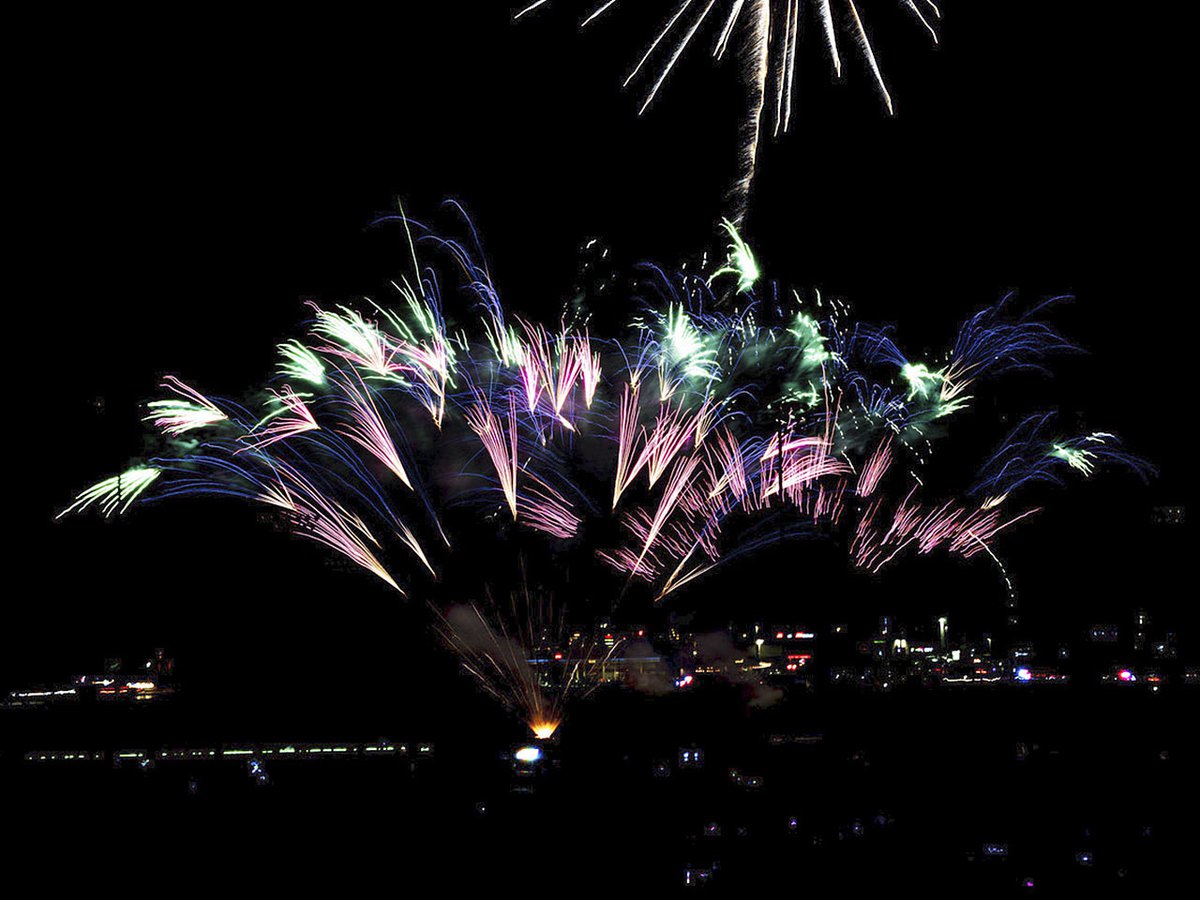Boom.
The city parks commission rejected pleas to cease fireworks shows at Warner Park, voting instead Wednesday night to reduce the number of displays to six for the upcoming season.
“People build memories around fireworks. People like fireworks,” said outgoing commission president Moira Harrington. “On the other hand, you all made some wonderful points tonight,” she added, referring to those who asked in public testimony for the displays to cease.
“It’s a balance, and I think it’s reasonable that we’re seeing this trajectory of going seven last year, six this year,” Harrington said.
Commissioners approved the continuation of fireworks at some Madison Mallards and Night Mares games with the understanding that “there is a plan in place” to further reduce the number of shows or seek alternatives, like drone displays. Three of the shows approved for this season will be low-decibel. Additionally, the teams will not conduct a fireworks show before any infant bald eagles nesting in the area reach fledgling state.
During public testimony, members of local wildlife advocacy group Wild Warner Park cited the harmful impacts of fireworks on the environment, pets, and people with post-traumatic stress disorder. Many brought up concerns about pollution and respiratory health: high smoke concentrations after fireworks can reduce air quality and lead to negative health effects, according to the Wisconsin Department of Natural Resources.
“We are asking that the board consider different options regarding the Mallards firework displays,” said Wild Warner President Marie Jacobson. “This is the 21st century. There are options of firework displays that do not potentially harm the creatures, the environment, and our neighbors.”
Kathlean Wolf, a disabled veteran who has PTSD and asthma, said that though she loves her community in the nearby Brentwood Village — one that she notes is much more racially diverse than Madison as a whole — many residents suffer because of the fireworks shows. Regardless of income or geography, people of color in the United States are significantly more likely to be exposed to air pollution, according to the U.S. Environmental Protection Agency.
One friend’s baby wakes up in the night whistling after the shows, Wolf says.
“Your babies aren’t supposed to whistle. They’re supposed to breathe,” said Wolf, adding that the friend ended up taking their baby to urgent care in at least one instance.
Ticket sales increase around 5-10% at games with fireworks shows, said Vern Stenman, president of the Mallards. Though Stenman said he would like to gradually decrease the number of fireworks shows, he would have to “find other ways to fill those spots.”
Aside from Stenman, no one spoke in favor of continuing fireworks shows during the public comment period of the meeting. Around 10 residents spoke in opposition, with some noting they’d prefer light-up drone shows, which don’t create noise or air pollution but are much more expensive than traditional fireworks. In recent years, drone shows have become a popular alternative, with cities like Napa, California, and Salt Lake City, Utah, using drones for their July 4 displays.
The Mallards are attempting a drone-only show for the first time this year. A drone show with low-decibel fireworks was well received last year, Stenman told the commission. A typical fireworks display costs $2,500-$3,500, Stenman said, adding that a drone show is around 10 times more expensive than that.


